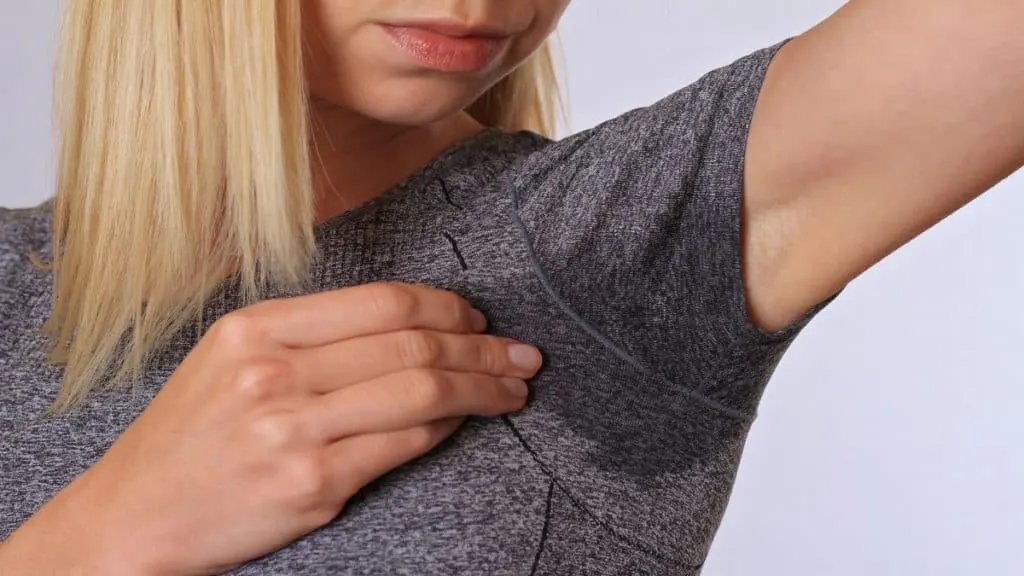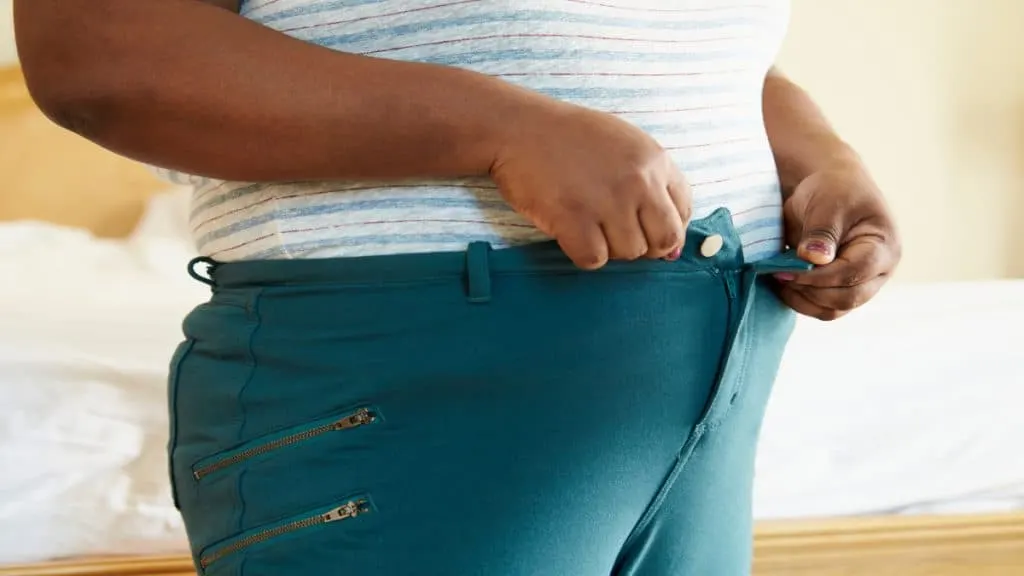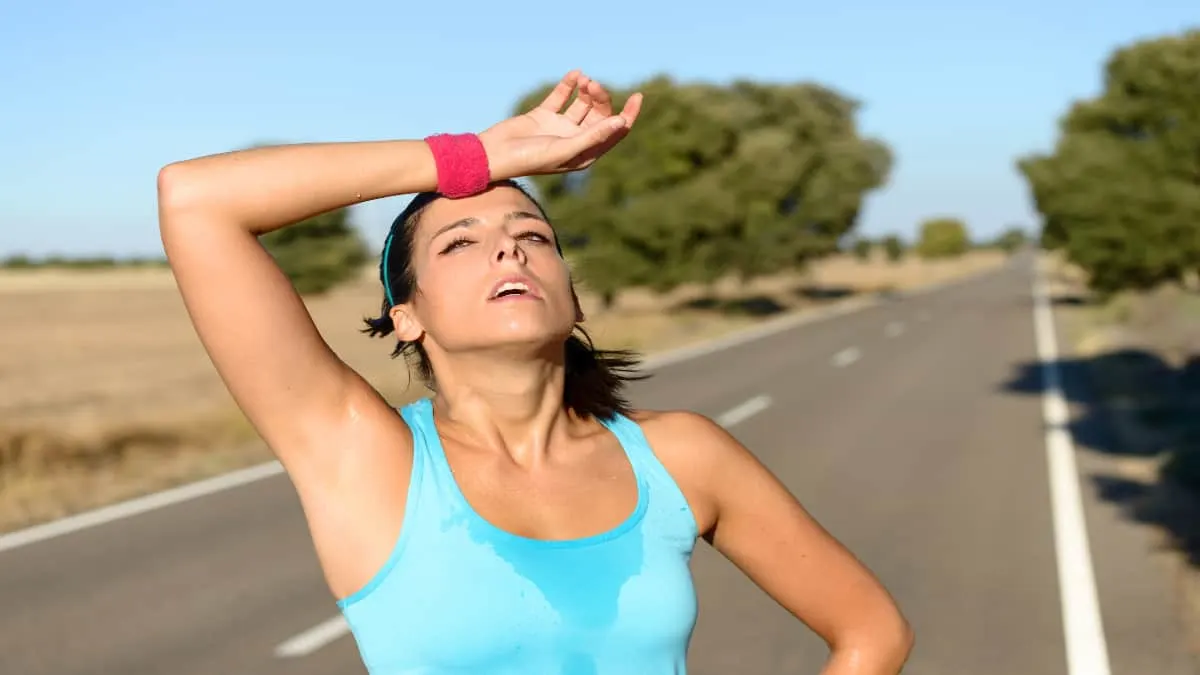Since the forearm anatomy is naturally so complex, sweaty forearms can be caused by numerous different conditions, some of which are more serious than others.
In this article, we’ll explore each possible cause of your perspiration so that you can get informed about your sweat and why it’s appearing on your lower arms.
Related post: how to lose forearm fat
What causes sweaty forearms?
The causes for sweaty forearms range from normal reasons, such as exercise-induced perspiration, to more serious medical issues like hyperhidrosis. While treating medical conditions is beyond the scope of this guide, it will still inform you of the potential causes of your problem. [1]
Intense exercise

It’s obvious, but intense exercise can cause us to sweat profusely. This is especially true if you’re training at a high intensity or keeping up a moderate pace for a prolonged period of time.
Moreover, working out in hot climates or in facilities without air conditioning can exacerbate the sweating.
In these circumstances, it makes logical sense to replenish this lost fluid by drinking plenty of water, which will also help you to maintain your performance for longer.
The forearms aren’t usually the first place to start sweating during exercise, however, so it could be a sign that you’re exercising at a very high intensity if you notice that your lower arms are sweating profusely.
Also, make sure to hydrate yourself before your workout. This is important because quenching your thirst with a drink of water and actually getting adequately hydrated are two different things. In other words, proper hydration levels don’t occur the moment that you cease being thirsty. Your body still has to process the water to hydrate your cells.
Excessive amounts of clothing

Many people make the mistake of wearing too much or improper clothing to the gym, out on the bike, or while running on the road that has poor moisture-wicking capabilities. As such, they often get sweaty forearms because there are simply so many layers on top of their lower arms.
And while special moisture-wicking clothing isn’t a cure-all, it can help you to stay dry for longer.
Of course, simply wearing fewer clothes can have a similar effect. The issue is that you might be too cold early on in this scenario, so it’s best to experiment and find a balance that suits your body and chosen activity the best.
Similarly, if you’re wearing tight-fitting clothing, it can also make your body heat up faster, which in turn can cause you to sweat more.
Hyperhidrosis

Hyperhidrosis is a condition that causes people to sweat excessively. [2] It often occurs when the nerves that usually assist your sweat glands don’t function correctly.
The issue for many people is that excessive sweating can cause embarrassment and reduce their overall quality of life.
Also, it’s well documented in research that people who sweat excessively tend to experience more skin conditions.
Wearing antiperspirant can help, but it’s always best to talk to your doctor to make sure that your sweaty forearms and palms, among other areas, aren’t caused by something more serious.
Diabetic neuropathy
One of the potential causes of hyperhidrosis is diabetic neuropathy. [3] Again, this condition affects the nerves that are responsible for signaling to your sweat glands, and so they can secrete a lot more sweat than usual when they’re not functioning correctly.
In particular, you may notice excessive sweating around your lower body if you have diabetic neuropathy because the condition mostly affects the nerves of the legs and the feet.
Obesity

People who are obese tend to have more active sweat glands than those who are of a healthy body weight. [4] Scientists believe one of these reasons is due to more heat being kept inside the body since obese individuals tend to have much thicker layers of adipose tissue.
Also, simply moving your own body as an obese person is more challenging than it is for those who have less body fat. As such, your forearms might start to sweat through sheer exertion, something which can be exacerbated during exercise.
Conclusion: What can you do about sweaty forearms?
Many of us have experienced heavy bouts of sweating due to intense exercise and exertion. But we can also get sweaty forearms for other reasons, such as stress, anxiety, or hyperhidrosis.
Talking to your doctor is the best thing to do if your problem persists once you’ve cooled down from exercise because they can rule out more serious medical conditions by conducting proper tests on you in person.
References
- NHS website. (2021, January 19). Excessive sweating (hyperhidrosis). Nhs.Uk. https://www.nhs.uk/conditions/excessive-sweating-hyperhidrosis/
- Hyperhidrosis – Symptoms and causes. (2020, August 18). Mayo Clinic. https://www.mayoclinic.org/diseases-conditions/hyperhidrosis/symptoms-causes/syc-20367152
- Huizen, J. (2019, March 28). How does diabetes cause abnormal sweating? Medical News Today. https://www.medicalnewstoday.com/articles/317366
- Maria, A., Lottenberg, P., Sanchez, N., & Jensen, O. (2018). Hyperhidrosis and Obesity. Hyperhidrosis, 19–25. https://doi.org/10.1007/978-3-319-89527-7_3

